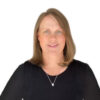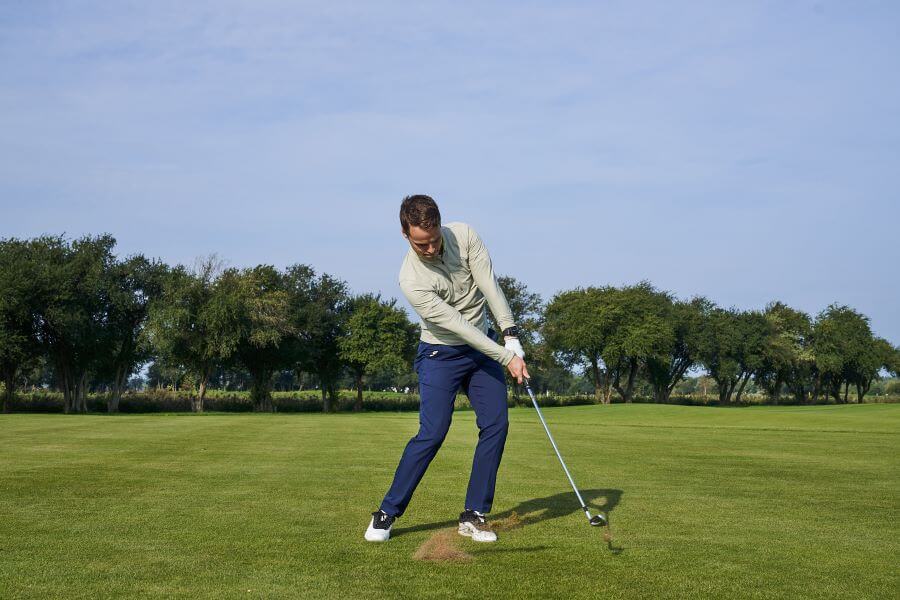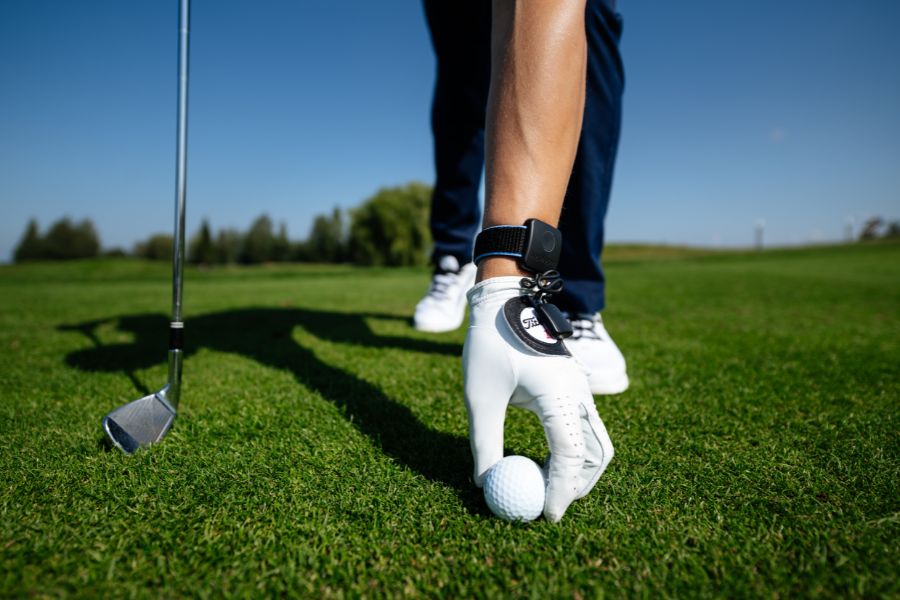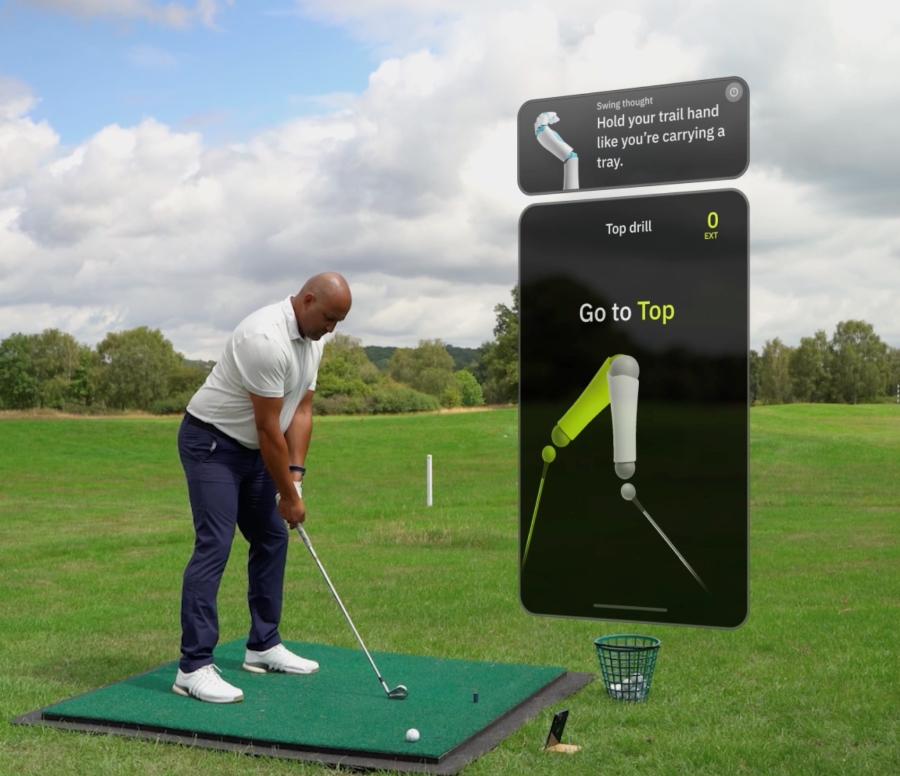Golf Grip 101: Different Grip Types, Pressure & What the Pros Do
Some golfers say “grip it and rip it,” but that overlooks the foundation of the swing. The grip controls the clubface, and the clubface largely determines where the ball starts and how it curves.
Before worrying about swing plane or timing, a golfer’s priority should be a correct grip.
This guide covers how to hold a golf club step by step, the different types of grips, grip strength and pressure, how grip size matters, and what tour player data reveals about the best players in the world.
Note: Instructions are written for right-handed golfers. Left-handers should reverse them.
How to Hold a Golf Club (Key Takeaways)
- Hold the club primarily in the fingers, not the palms.
- The lead hand (left for right-handed players) plays the biggest role in controlling the clubface.
- Grip strength (weak, neutral, strong) directly influences shot shape.
- Grip pressure should feel firm but tension-free – around 5/10.
- Grip size should match hand size; the wrong size creates inconsistency.
- A consistent grip builds confidence and makes swing changes easier.
Contents
Quick Start: 3 Steps to a Neutral Grip
- Lead hand: Place the grip diagonally across the fingers. Wrap the fingers so two knuckles are visible; the thumb points just right of center.
- Trail hand: Place it below the lead hand. The lifeline should cover the lead thumb; the “V” formed by the thumb and index points to the trail cheek/shoulder.
- Grip pressure: Maintain a medium firmness (5/10) enough to control the club without creating forearm tension.
How to Grip a Golf Club – Step-by-Step Guide
Learning how to grip the club correctly is the starting point for every golfer. A proper grip connects your hands to the club, sets the face angle, and gives you the best chance of returning it square at impact.
While there are several variations, the three most common grips, overlap, interlock, and ten-finger, each have their own advantages, disadvantages, and best fits depending on hand size and playing style.
The Overlap Grip (Vardon Grip)
The overlap grip connects the hands by resting the trail pinky over the gap between the lead index and middle fingers.
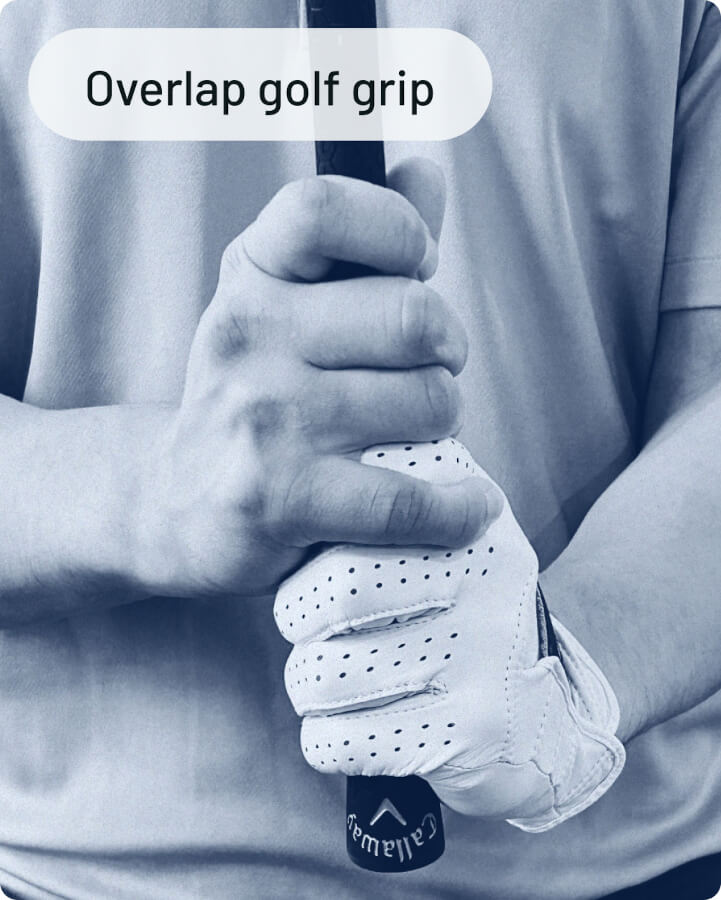
Steps:
- Place the club across the base of the lead fingers (not the palm).
- Point the lead thumb down the shaft, slightly right of center.
- Place the trail hand underneath, resting the pinky on or between the lead fingers.
- Close the trail hand so the lead thumb fits into its palm.
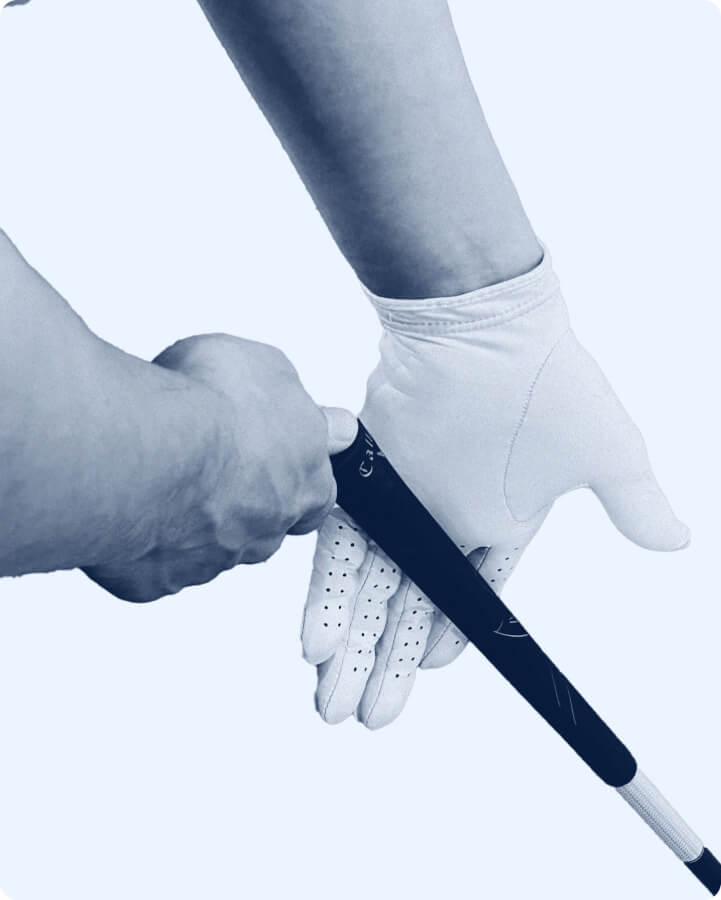
Why it works:
The overlap grip reduces tension and allows the body to rotate through the swing instead of relying on the hands.
Golfers with larger hands often find it more comfortable. Some players rest the trail pinky on top of the index finger instead of between two fingers—this variation can further reduce grip tension.
Pros:
- Reduces tension in the hands.
- Works well for golfers with large hands.
- Enhances feel around the greens.
- Encourages body rotation over hand manipulation.
Cons:
- Can feel less secure for golfers with small hands.
- May initially reduce control of the clubface.
The Interlocking Grip
The interlock grip links the lead index finger with the trail pinky. Tiger Woods and Jack Nicklaus both favor this style.
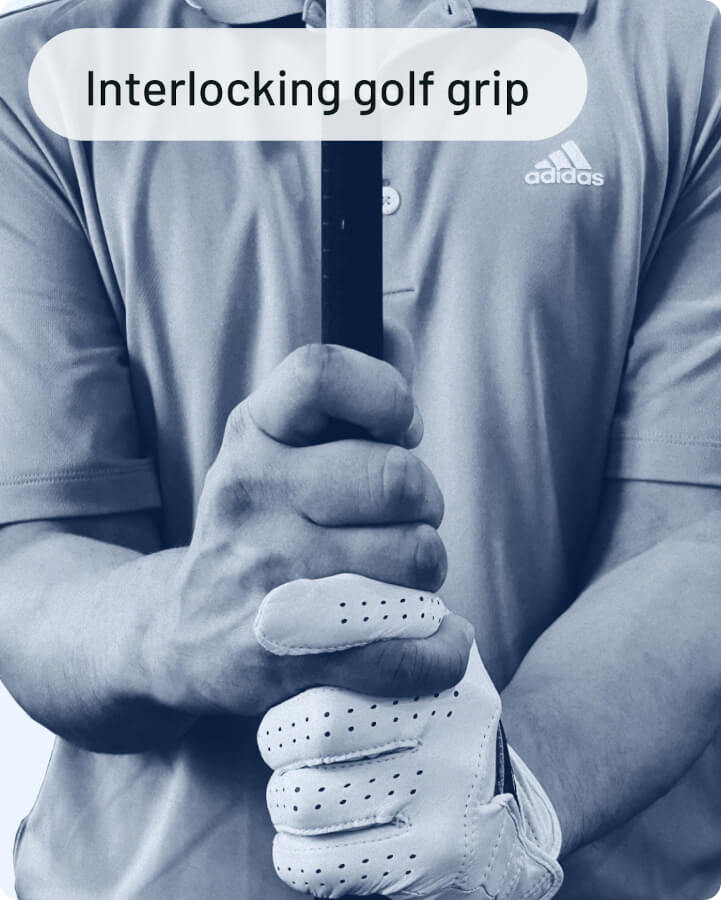
Steps:
- Place the club in the fingers of the lead hand, thumb right of center.
- Interlock the trail pinky with the lead index finger.
- Close the trail hand so the lead thumb fits into its palm.
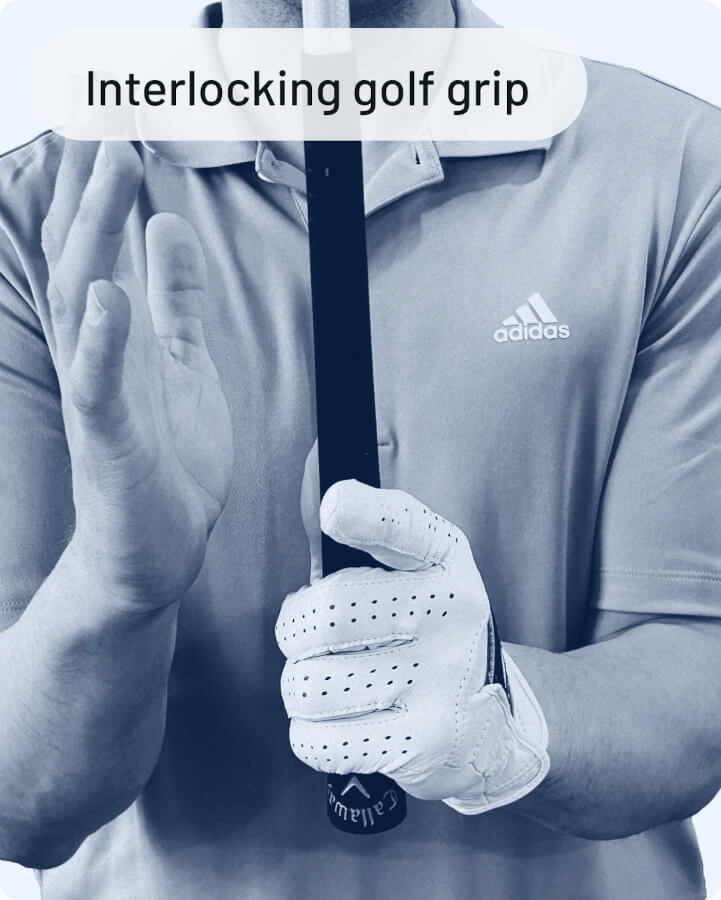
Why it works:
The interlock grip creates a very strong connection between the hands. Many golfers find it feels natural, especially with smaller hands, and it can help generate more clubhead speed.
Pros:
- Firm connection between the hands.
- Suits golfers with smaller hands.
- Can increase speed and power.
- Feels natural for many beginners.
Cons:
- Strong connection can cause too much grip pressure.
- May reduce finesse on touch shots around the greens.
The Ten-Finger Grip (Baseball Grip)
In the ten-finger grip, both hands sit directly next to each other on the club without interlocking or overlapping.
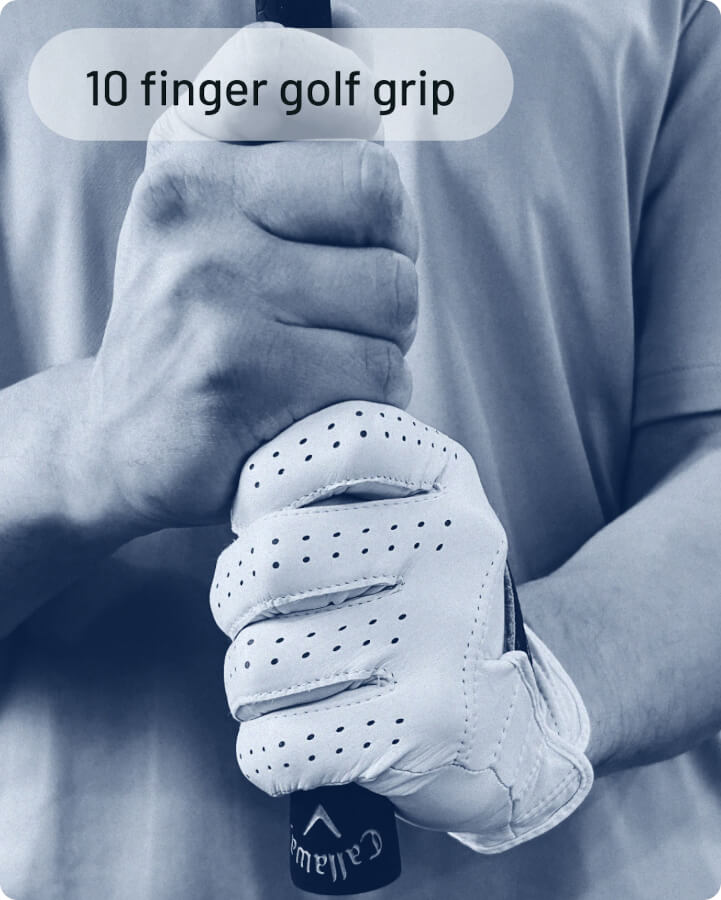
Steps:
- Lead hand in the fingers, thumb just right of center.
- Trail hand directly below, touching the lead hand.
- All ten fingers contact the grip.
Why it works:
This grip is often used by beginners, juniors, or golfers with arthritis. It provides a sense of control and strength, though it may cause the hands to act independently.
Pros:
- Simple and easy to learn.
- Helpful for juniors or golfers with arthritis.
- Provides early sense of control for beginners.
Cons:
- Hands can work separately, causing inconsistency.
- Encourages more of an arms-only swing.
- Rare at higher levels of play.
Grip Strength: Weak, Neutral, Strong
Grip “strength” refers to how the hands are rotated on the club. Many golfers confuse it with grip pressure but it is not the same thing.
Weak Grip: Lead hand rotated left (fewer knuckles visible), trail hand more on top.
- Benefits: Helps reduce a hook
- Risks: Can make it harder to square the clubface
Neutral Grip: Two knuckles visible, V’s pointing at trail cheek.
- Benefits: Promotes consistency
- Most common among professionals
Strong Grip: Lead hand rotated right (3+ knuckles visible), trail hand more underneath
- Benefits: Helps square the clubface for slicers
- Risks: Can lead to hooks if overdone
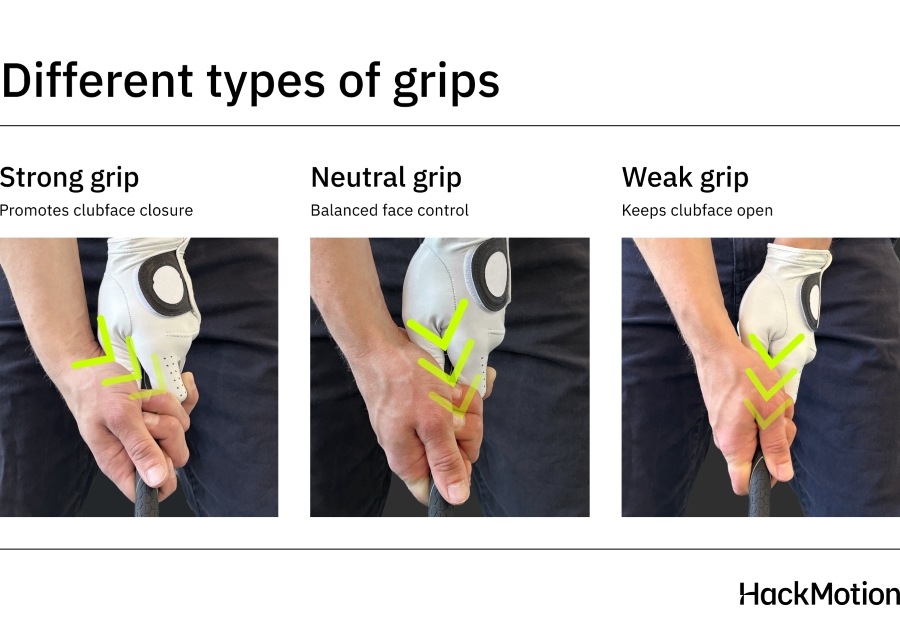
How to Adjust Your Grip Based On Your Miss
If you think grip strength is an issue in your game, adjust based on this table.
| Miss Pattern | Grip Adjustment | Why It Helps |
|---|---|---|
| Slice (face open) | Stronger grip (show more knuckles) | Encourages clubface to square |
| Hook (face closed) | Weaker grip (shows fewer knuckles) | Slows face closure |
| Push-fade | Neutral grip + check pressure | Reduces tension and open face |
| Pull-draw/hook | Neutral or slightly weaker | Calms over-active trail hand |
Grip Pressure Explained
Many golfers hear the advice to hold the club “like a baby bird.” In practice, grip pressure should be strong enough to control the club yet relaxed enough to allow free wrist and arm movement.
- Too tight (9–10/10): Creates tension, reduces distance, restricts motion.
- Too loose (1–2/10): Clubface becomes unstable through impact.
- Ideal (around 5/10): Firm but relaxed, with no forearm tension.
Practice tip: Hit ten balls with gradually lighter grip pressure until you lose face control. Then move one step tighter. That’s your baseline.
Grip Size and Hand Size
Grip size matters as much as grip type. The wrong size can make hands overactive or too quiet.
If you go for a golf club fitting, make sure you are testing your grip size in addition to the shaft flex and even the clubhead you use. All golfers should know their grip size.
- Men’s S/M or Women’s S–M gloves: Undersize
- Men’s M–L gloves (most golfers): Standard
- Men’s XL gloves: Midsize
- XXL or arthritis: Jumbo
Self-check: With the club gripped, the lead hand’s fingertips should just brush the palm. If they dig in, the grip is too small. If there’s a gap, it’s too large.

Common Grip Mistakes
Small grip errors can produce big problems. Here are the most frequent mistakes to avoid:
- Holding the club in the palms. Palms reduce wrist mobility, often leading to blocks or slices.
- Over-tightening. A white-knuckle grip creates tension, which costs distance and consistency.
- Trail hand taking over. When the right hand dominates, the face shuts too quickly, producing hooks.
- Wrong grip size. Too small = overactive hands. Too big = restricted release. Both cause inconsistency.
Each mistake can be corrected with awareness drills, half swings with focus on finger placement, grip-pressure tests, and proper sizing checks.
Putting Grip Options
Putting opens up even more grip variations. The way you hold your putter does not have to be the same way you hold the rest of your golf clubs.
Three common ones include:
- Reverse Overlap: The most widely used; balances both hands and improves distance control.
- Cross-hand (Lead Hand Low): Squares shoulders and calms the trail hand; great for players who struggle with yips.
- Claw/Saw: Limits trail-hand involvement; effective inside 10 feet.
Tour Player Grip Data (HackMotion Analysis)
A study of 150 professional golfers (120 current players plus 30 of the most influential from the last 70 years) shows that even the best in the world don’t all hold the club the same way. There’s no perfect golf grip.
What stands out is not that every player uses one “perfect” grip, but that certain patterns are far more common, and those patterns explain why their swings are so consistent.
For amateur golfers, the big lessons are:
- Most pros start neutral. At address, 57% of players set up with a neutral grip (two knuckles visible). This gives the best chance of returning the clubface square at impact.
- Flat wrists are the goal. Over half (57%) of professionals reach a flat lead wrist at the top of the backswing, making it easier to deliver a stable face.
- Impact is what matters. Players with weak grips often arrive with a flexed wrist, neutral grips with a flat wrist, and strong grips with flat or slightly extended wrists. All three can work, but each requires a matching motion.
- The trail hand stays simple. Nearly every pro (95%+) sets the trail hand in a neutral position at address, and at impact, 100% show an extended trail wrist.
Takeaway for amateurs: Don’t chase a tour player’s exact grip, but notice the trends. A neutral grip, flat lead wrist at the top, and extended trail wrist at impact give you the most reliable foundation for solid ball striking.
FAQs
Should I use the same grip for my irons and driver?
Yes. Consistency is key, though minor tweaks (slightly stronger or weaker) can help shape shots.
Is a putting grip different?
Yes. Reverse overlap is most common, but cross-hand and claw styles are also popular.
How long does it take to adjust to a new grip?
Most golfers need several weeks of practice before a new grip feels natural.
Is the grip the same for left and right-Handers?
Yes, simply reversed. The lead hand always controls the top of the club.
Final Thoughts
The grip is the foundation of the swing. By holding the club in the fingers, maintaining medium pressure, and choosing the right strength for your miss pattern, golfers set themselves up for straighter, more consistent shots.
Tour player data shows there’s no single “perfect” grip, but neutral grips and flat wrists at impact dominate at the highest level. Review your grip regularly, regrip when necessary, and practice until it becomes automatic.


